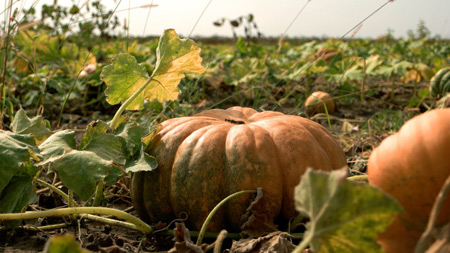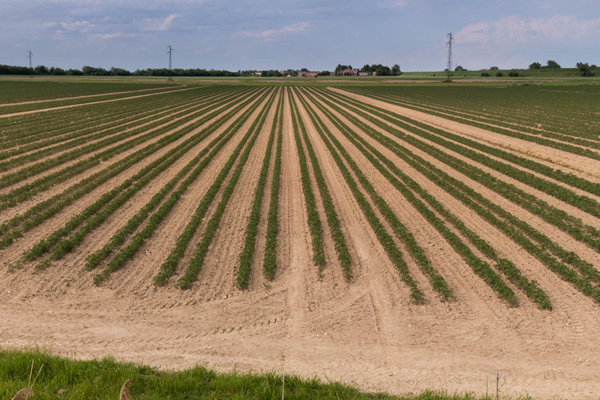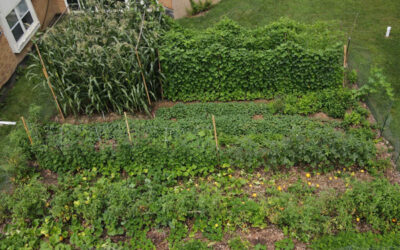I’ve said repeatedly that per pound of production, no one has comprehensively compared the efficiency of self-sufficiency gardens to the industrial food system. Then I came across a 2019 scientific study, published in the prestigious Proceedings of the National Academy of Sciences, that claims to have done just that, citing other such research as well. So it would be good to see what it has to say. Because this blog is written for the average person, I’ll avoid academic jargon while still describing it as usefully and objectively as I can.
The study looked into inputs and produce yields over a year in thirteen small-scale, urban organic farms and gardens in Sydney and Wollongong, Australia. It assessed benefit-to-cost ratios from economic, emergy (embedded energy), and sustainability perspectives, based on how the gardens compared to commercial vegetable production. It concluded that UA (urban agriculture) can be highly productive, but only with many trade-offs to ensure its sustainability.
My overall impression is that the authors wanted to show that home and community gardens could be quite bountiful while simultaneously trying to convey that they were not much, if any, better than commercial production. This was mainly because of perceived energy and economic inefficiencies of self-sufficiency gardens, which the authors also said could reasonably be re-interpreted in such a way as to render those perceptions not very meaningful. In other words, they seemed to try to have it both ways. So see what you think, based on what I present here. Or, you can just read the original. I’ll start with actual quotes.
Industrial is better
To begin with, there are certain statements that industry defenders could cite as evidence that self-sufficiency gardens can’t compete with the industrial food system:
- Significance: “… economic and emergy analyses indicted that [urban community gardens] were relatively inefficient in their use of material and labor resources.”
- Abstract: “Benefit-to-cost ratios demonstrated that, on average, the gardens ran at a financial loss, and emergy transformity was one to three orders of magnitude greater [and thus far less efficient] than many conventional rural farms.”
- Economic analysis: “Overall, gardening achieved low rates of return, with the mean value of materials and labor invested exceeding the value of yielded produce, resulting in a mean benefit-to-cost ratio of 0.62.” [That is, costs exceeded benefits by 38%.]
- Garden Surveys: “The majority of gardeners indicated that they were not highly motivated by the desire to produce large quantities of food.”
Self-sufficiency gardens are better
On the other hand, statements indicating that HGs can indeed successfully compete with industry are also common:
Productivity of UA
- “We found that the productivity of UA was high across the study sites and exceeded that of typical rural vegetable farms in Australia.”
- “Ten years of annual surveys of 11 commonly grown culinary vegetable crops on Australian commercial farms found that when averaged over that period, the combined mean yield of all 11 crops was just 54% of the level found in this study at 3.18 kg⋅m−2
- “… the systems covered in this study likely produced more than twice the average yield of typical Australian rural organic farms.”
- “This mean yield figure [about twice that of commercial] is close to the mean of 6.19 kg⋅m−2 reported in 15 other studies from around the world that have carried out primary analyses of the output of UA systems.”

Some of the most intriguing findings
- At 1.2 pounds of vegetables per square foot, both the average garden harvest in this study—as well as the average of fifteen other studies—were 60% higher than mine (0.74 lb/sq ft). However, as I’ve mentioned more than once, weight per unit area means little when assessing how long a harvest will sustain you. A hundred pounds of dried beans and corn will keep you alive far longer than the same weight in tomatoes, squash, and cabbage. Still, I was pleased to see these results, as they’re yet another indication that my yield rates are by no means unusually high. Which, since my garden of 35’ x 40’ can sustain me for a year, lends credence to my assertion that pound for pound, self-sufficiency gardens are far more efficient than commercial operations.
- Labor was portrayed as a cost when calculating the efficiency of self-sufficiency gardens, which was a major factor in the perceived low economic returns mentioned above. However, when the authors noted that garden labor could just as well be recognized as recreation and thus omitted as a cost, they found that self-sufficiency gardens suddenly became much more economically profitable. Of course, when done properly (voluntarily and with enjoyment), self-sufficiency garden labor is not just a neutral factor but rather, a benefit whose health boons can be quantified and added to the plus side of the economic ledger. That would make self-sufficiency gardening even more economically profitable.
Observations that are almost comical
- The authors deemed self-sufficiency gardens as unsustainable in part for sourcing compost and other organic inputs from outside the garden premises. Amazing, as they didn’t even mention whether the commercial vegetable farms they cited made use of inputs like pesticides, chemical fertilizers, and irrigation sourced from off the farm. I mean, really.
- “One of the reasons for the higher outputs reported here [for self-sufficiency gardens] is likely due to the substitution of mechanical labor with mostly manual labor.” What cracks me up about this quote is the perception that shovels, rakes, and hoes are “substituting” for tractors and the like. Didn’t hand tools come first? Then there’s the comical idea of a gardener’s hoe vs. a 10,000-pound monster tractor, with the hoe coming out the winner. Whatever happened to the concept of “labor-saving” machinery?
Humor aside, nothing strikes at the very heart of the supposed superiority of industrial agriculture like this profound acknowledgement. And from the very bastions of the scientific establishment, at that. Do you realize that it begins to explain why I, as well as any other reasonably competent self-sufficiency gardener, using only hand tools, can easily feed a person on just 1% of the 3 acres it takes the industrial system, with all its machinery, to feed a person? Could this revelation, at least for food production, denote the birth of a Non-Industrial Revolution?
 Industrial food is an interlocking system, not an assemblage of removable parts
Industrial food is an interlocking system, not an assemblage of removable parts
Overall, I’d say this study makes a conscientious effort to compare the efficiency of self-sufficiency gardens to commercial vegetable operations. However, it’s limited to a few narrowly defined energy, economic, and environmental factors, even though—to the authors’ credit—that represents a broader perspective than had been employed in previous such studies. Still, they portray commercial production as though the vegetables can be typically grown, harvested, and delivered straight from the field to the table, completely apart from the rest of the industrial system.
Self-sufficiency gardens do essentially that, but of course industry doesn’t. Commercial farms are an integral part of a multifaceted industrial food system whose interlocking components function only together as a whole, rather than as individual parts any one of which can independently get food to your plate. Just as a car operates only as a whole system; you can’t take parts out of it and expect them to do anything useful on their own.
That’s why I still maintain that no one, as far as I know, has conducted a truly comprehensive comparison of self-sufficiency gardens to industrial food. If someone had, you would expect to see a full accounting of all the industrial external costs listed in Home Gardens Outshine Industrial Food. Those $trillions in externalities are what makes industrial food so extraordinarily inefficient, not only economically but also with respect to health, social aspects, land and energy use, and the environment. Self-sufficiency gardens lack such external costs, and that fact should be considered in any comparison to industrial food.
For that reason, I look forward to the day when agricultural economists take what I’m saying seriously enough to start conducting genuinely comprehensive comparisons of self-sufficiency garden food production to the industrial food system as a whole. Maybe soon?


 Industrial food is an interlocking system, not an assemblage of removable parts
Industrial food is an interlocking system, not an assemblage of removable parts


0 Comments